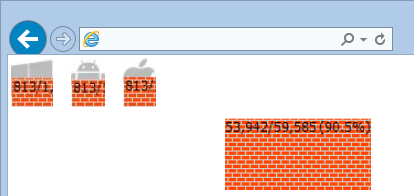
Skyrim item code daedra heart. To look decoded stream, click WCF Silverlight tab. Below are raw and encode Polling Duplex messages as seen in fiddler The reason this inspector is called WCF Silverlight is because it not only understand.Net Framing used in Polling Duplex, it also understand raw binary Xml used by WCF RIA services and binary SOAP messages. The Inspector will validate the client credentials. If credentials are valid then it will transfer the call to the service method otherwise give an exception message invalid credential. A combination of WCF message inspectors, Contract Behavior and WSDL Export Extensions made it possible to create reusable Web Services Components. However, this makes tools like Fiddler much less useful when it comes to debugging why the thing isn't doing what you thought it was doing, because by default Fiddler doesn't have a useful view of such messages. Well, look no further. There is a WCF Binary-encoded Message Inspector for Fiddler which solves this need. It's free and hosted.
Ebs program keygen. Ebs Program Office You can access our automated telephone system on 0800 100 888 (New Zealand Herald) 0800 001 099 (Regional Publications) and follow the prompts. You only need your registered phone number. Programm Management The team shapes, realizes, reviews, and adapts the programmes in cooperation with all relevant departments aiming to provide high quality study programmes which are in line with EBS vision and mission. 5 days ago - Special Program Helps People Get Out Of Debt Without A LoanImprove Debt. Sleek Bill Keygen Torrent.

.jpg?sfvrsn=ad640c7d_1)


Skyrim item code daedra heart. To look decoded stream, click WCF Silverlight tab. Below are raw and encode Polling Duplex messages as seen in fiddler The reason this inspector is called WCF Silverlight is because it not only understand.Net Framing used in Polling Duplex, it also understand raw binary Xml used by WCF RIA services and binary SOAP messages. The Inspector will validate the client credentials. If credentials are valid then it will transfer the call to the service method otherwise give an exception message invalid credential. A combination of WCF message inspectors, Contract Behavior and WSDL Export Extensions made it possible to create reusable Web Services Components. However, this makes tools like Fiddler much less useful when it comes to debugging why the thing isn't doing what you thought it was doing, because by default Fiddler doesn't have a useful view of such messages. Well, look no further. There is a WCF Binary-encoded Message Inspector for Fiddler which solves this need. It's free and hosted.
Ebs program keygen. Ebs Program Office You can access our automated telephone system on 0800 100 888 (New Zealand Herald) 0800 001 099 (Regional Publications) and follow the prompts. You only need your registered phone number. Programm Management The team shapes, realizes, reviews, and adapts the programmes in cooperation with all relevant departments aiming to provide high quality study programmes which are in line with EBS vision and mission. 5 days ago - Special Program Helps People Get Out Of Debt Without A LoanImprove Debt. Sleek Bill Keygen Torrent.
